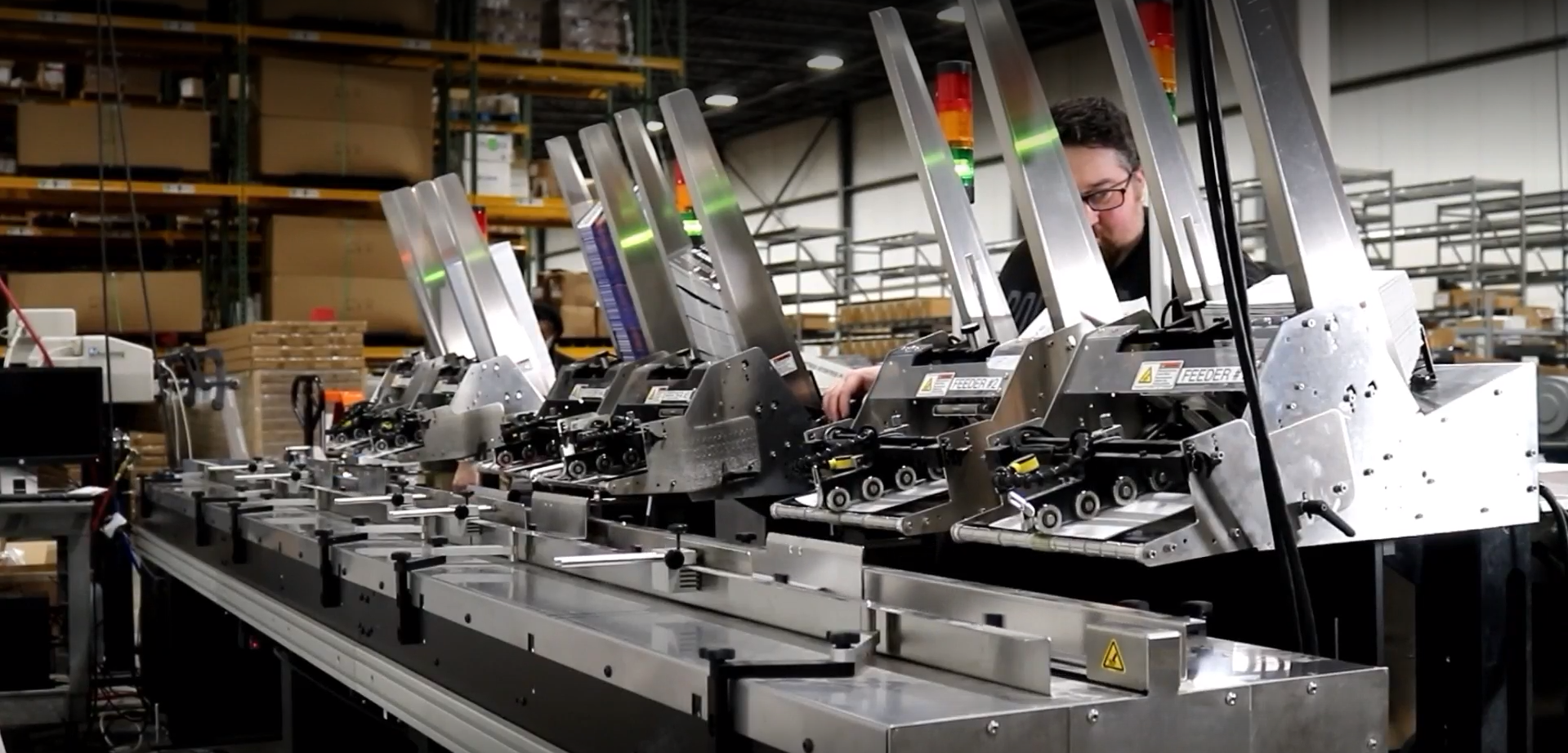

See behind the scenes. Learn why Helm's Printing, Collating, and Bindery services are chosen by some of today's largest global brands.
In today’s day and age, it’s easy for businesses to overlook the value of printed reading and marketing materials. Sending customers to a website landing page is as simple as ever with a snap, scan, or search, but customers can only do so if they have a mobile device, an accessible internet connection, and a tolerance for screen reading. On the other hand, print materials and printing services will always play a vital role in customer consumption of essential information. More than 81% of consumers prefer printed reading materials, citing accessibility, clarity, and decreased eye strain.
Despite the rise of digital marketing and online resources, in many cases hard-copy manuals, guides, and brochures continue to be the most practical option for effective dissemination of important information. From automotive service manuals to monthly magazines, the need for printing, bindery, and collating services is here to stay.
In this blog post, we’re taking you behind the scenes of Helm’s printing, collating, and bindery services and how each process is utilized to provide your brand with the best possible print materials.
.gif)
At Helm, we have an elevated commitment to quality and efficiency. Over the years, we have focused on innovation and continued to invest in state-of-the-art equipment. Our Canon IX Cutsheet Inkjet printer, shown here, is one of only four in North America. This commercial printer has the capability to create print materials of all sizes, vibrancies, and styles – in high or low quantities.
To get started our creative and print-production teams custom design and upload your requested print compositions - anything from brochures to guidebooks, textbooks, marketing and promotional materials, business cards, and more - on your choice of paper stock. Unlike other printers, the Inkjet printer utilizes a color grip agent that can be printed directly onto coated stocks, producing clearer, more vivid designs that never smear, smudge, or fade. During print production, inline spectrophotometers constantly regulate the quality and consistency of each output page, sheet, or card, detecting potential errors and inconsistencies before they occur. With traditional printing companies, up to 31% of prints are discarded due to errors and obsolescence. Helm boasts a 98% perfect print rate that ensures your prints are produced as accurately as they are timely.
For more traditional printing needs, our automated Riccoh printers can create up to five million print documents per day, including complete drying, curing, and stacking. The four-color and reserved black and white toners for publication texts produce the same high-quality results on more absorptive stocks.

After printing, copies are transferred to the pick-and-pack sector of our warehouse, where an assortment of machines collaboratively work together to streamline the collation process. Stacks are fed into the stream feeder, a collating machine that collects papers and assembles ordered sets. A bagging machine then adds labels and barcodes to sterilized packages before they proceed to the auto-bagger to be filled. Depending on the job's complexity, up to six collating sections are utilized at a time with two employees stationed at the end to collect the completed sets.
The introduction of the stream feeder at the onset of the pandemic proved to be a crucial investment after the heightening need for automation was made evident. Previously, producing 60,000 to 100,000 collated sets would take around three to four weeks. Completion time now ranges from five to seven days. These impressive capabilities have garnered the attention of some of the world’s most renowned brands who entrust their projects to this process.

Next, prints make their way to the bindery department - the last stop in the print production journey. This department boasts a wide array of equipment and machinery, each specialized in various tasks to refine and polish your prints for premium results.
Operators first set up the Perfect Binding Machine. This machine uses an integrated camera to scan the barcode on every text block and cover that was applied during the collating process to ensure a precise match. From there, printed pages are folded, sewn, stapled, stitched, or glued together to assemble the pages into a completed manual or booklet. With a commitment to perfection, our bindery department maintains a track record of achieving 100% accuracy with our Perfect Binding Machine.
After binding, small and large cutters, drill presses, slitter-cutter creasers, and booklet markers apply the final steps in achieving polished, professional appearances for your printed materials. Our cutters operate with a touch-safe and accuracy mechanism that only begins the cutting process once all obstructions are clear of its blades and when the document edges are perfectly aligned to its serrated edge.
After leaving the bindery department, completed materials are packaged and shipped from our on-site delivery center, where we can reach up to 70% of the U.S. population within two-days ground shipping.
From the initial design to the collation and binding processes, your brand deserves outstanding print materials that captivate and resonate with your audience. Whether for everyday essential services or commemorative, one-time events, a powerful print can leave a lasting impression on your clients and customers.
Looking to improve efficiencies with your print material needs? Contact us today to learn more about Helm’s printing, collating, and bindery capabilities. You can also reach us by phone or email at 1-800-445-4831 or info@helm.com.

For over 80 years, Helm has been helping brands enhance their appeal and inspire loyalty through our evolving set of unique, customizable, and client-focused services. Your brand is our passion.

For over 80 years, Helm has been helping brands enhance their appeal and inspire loyalty through our evolving set of unique, customizable, and client-focused services. Your brand is our passion.
